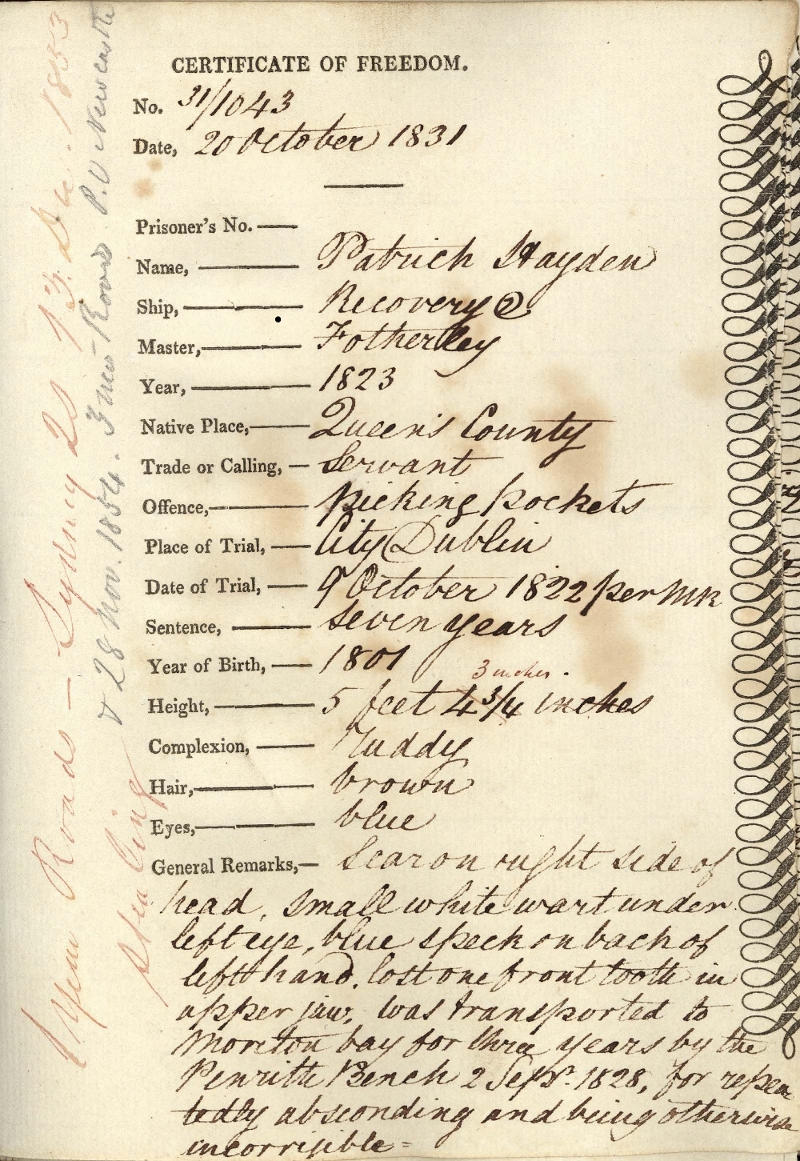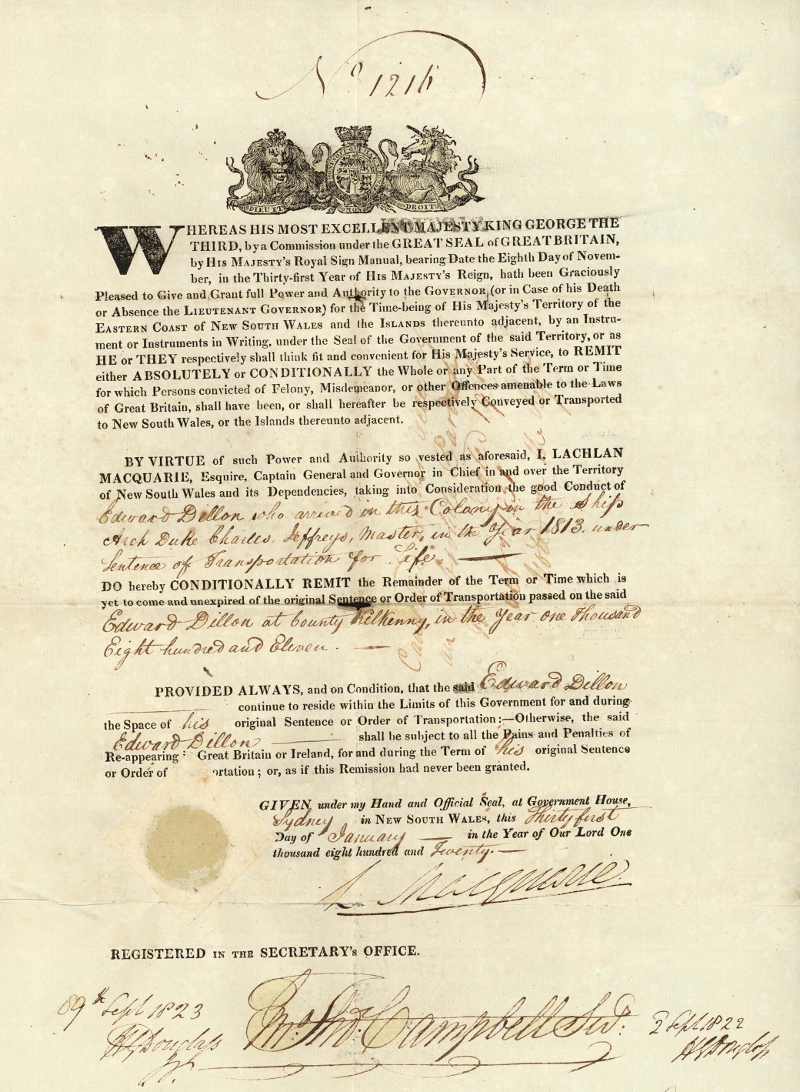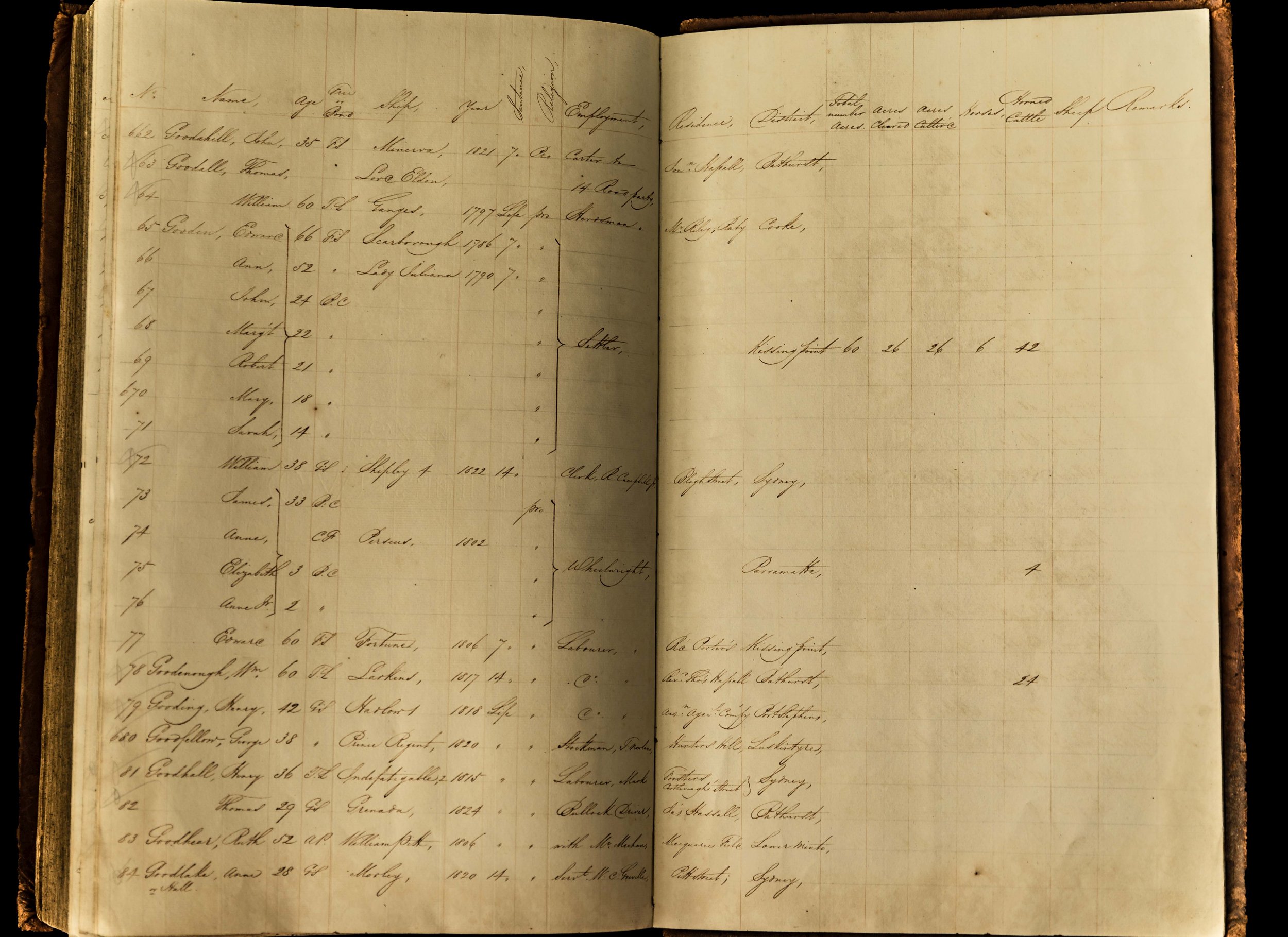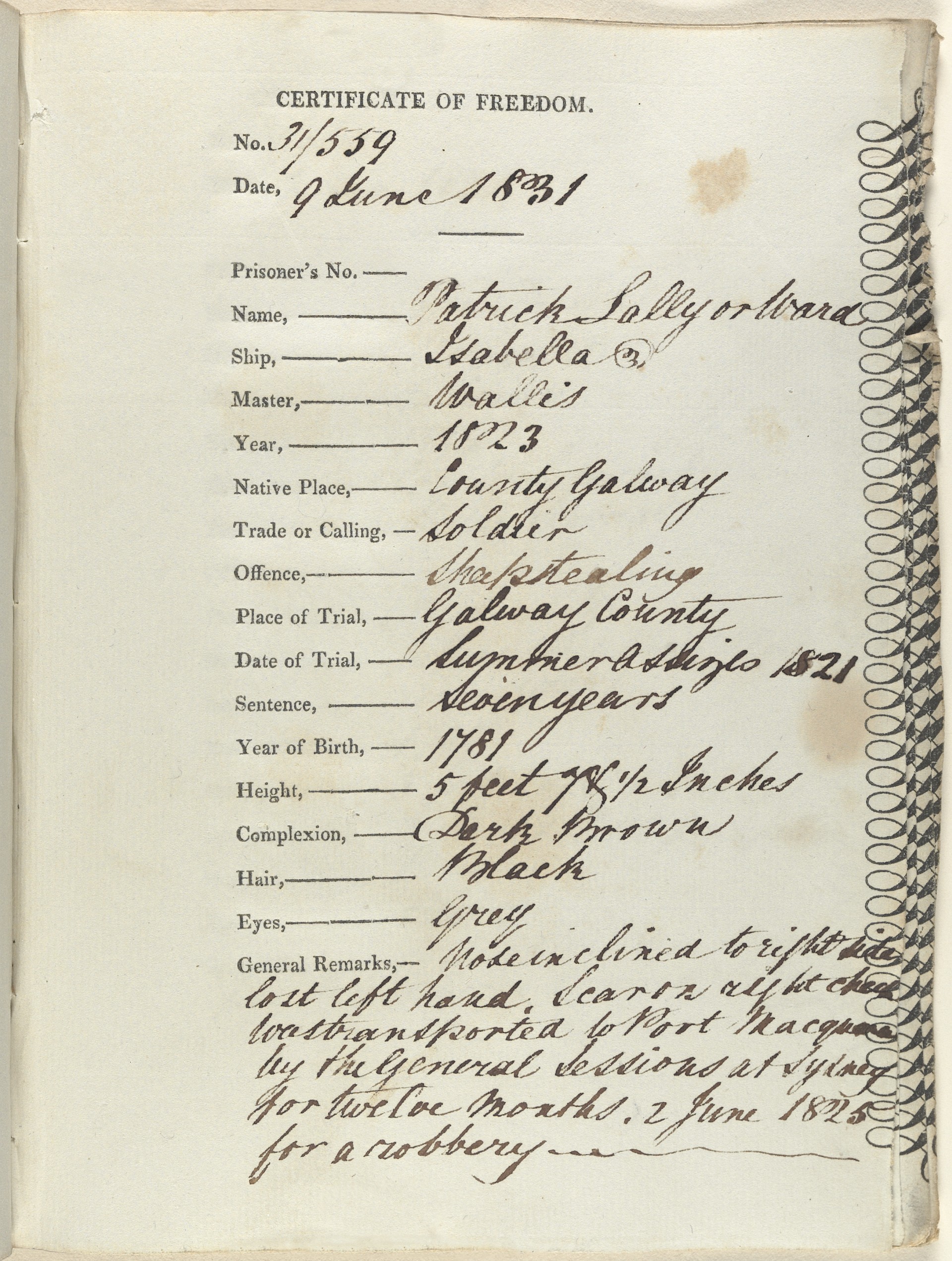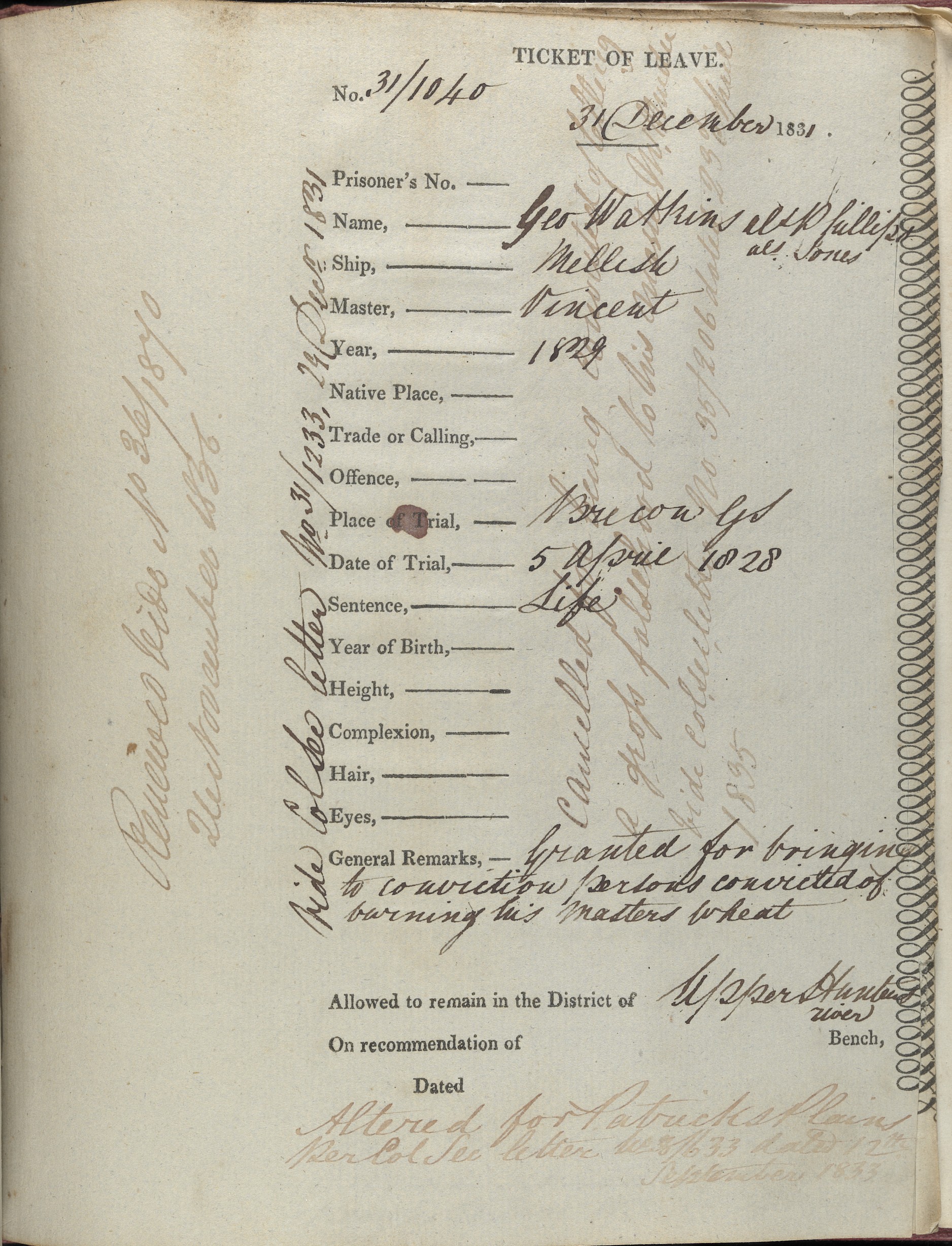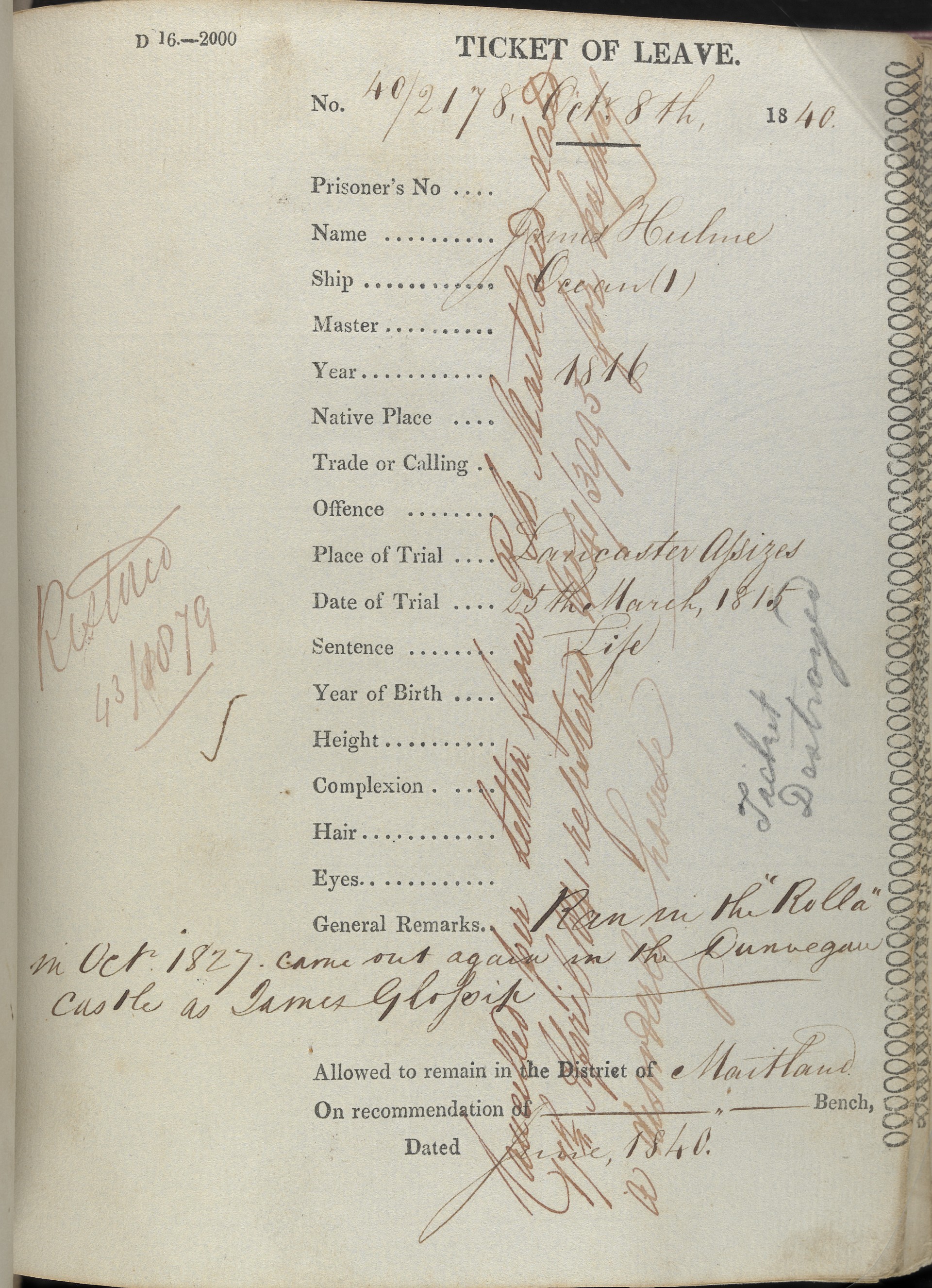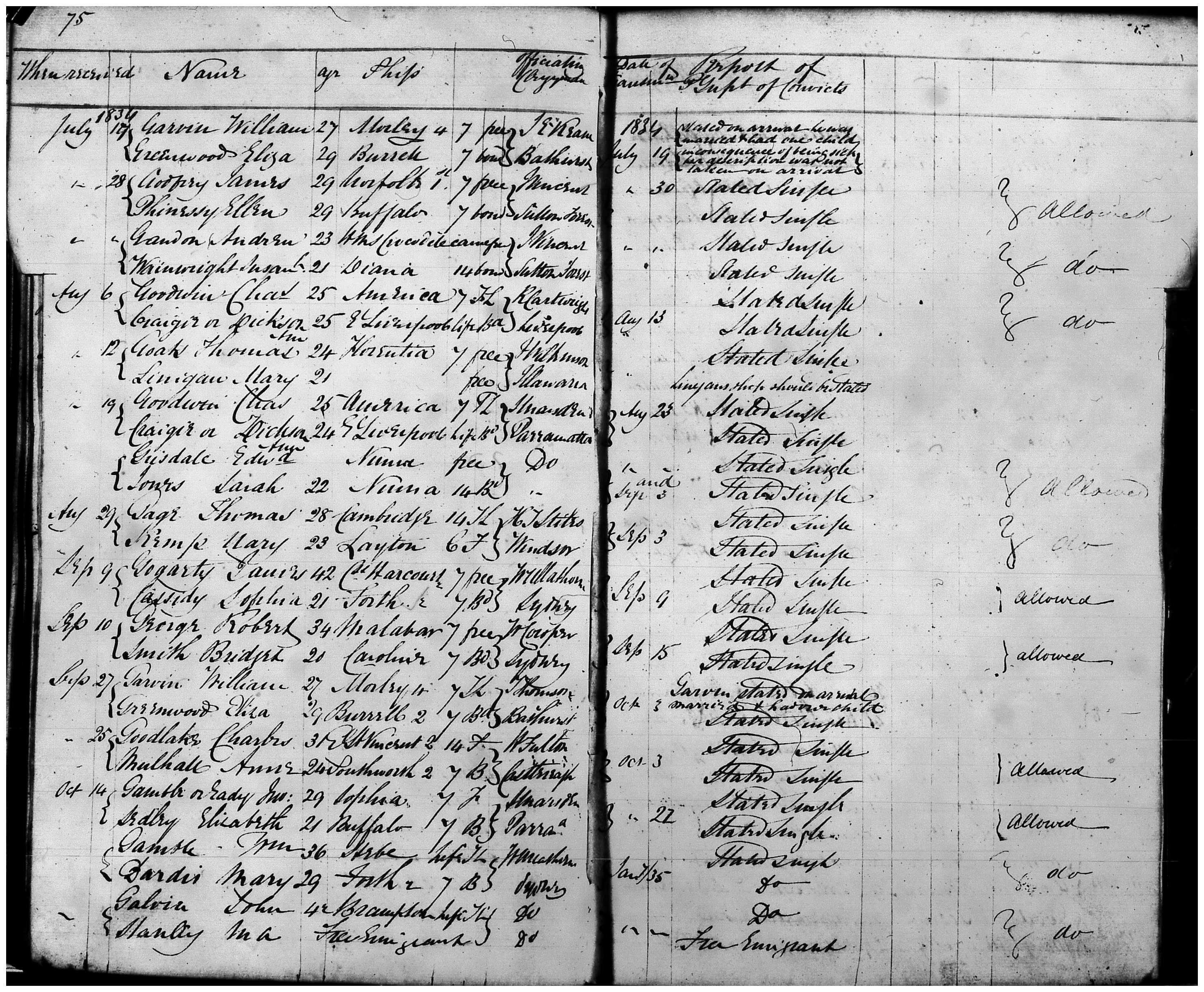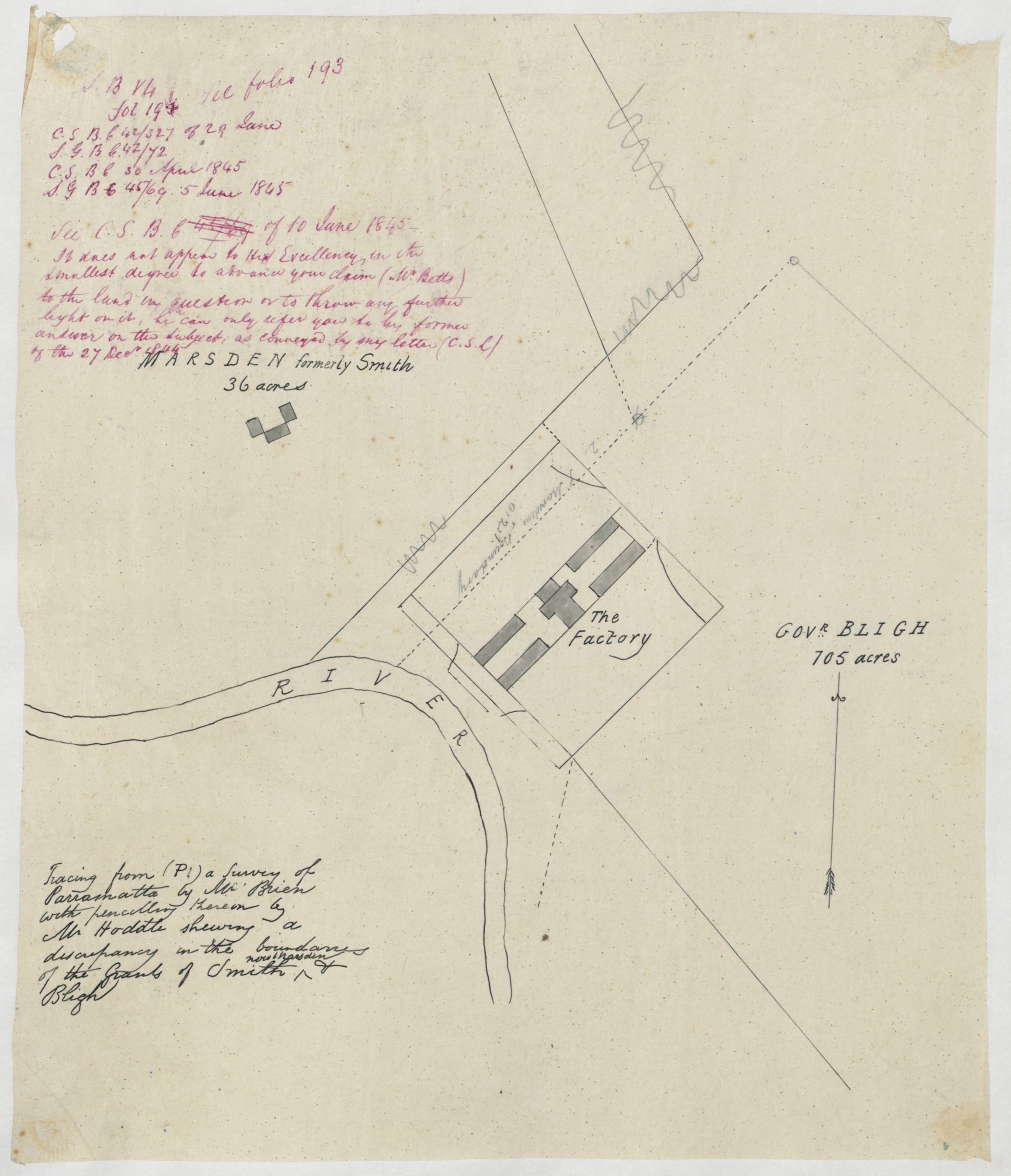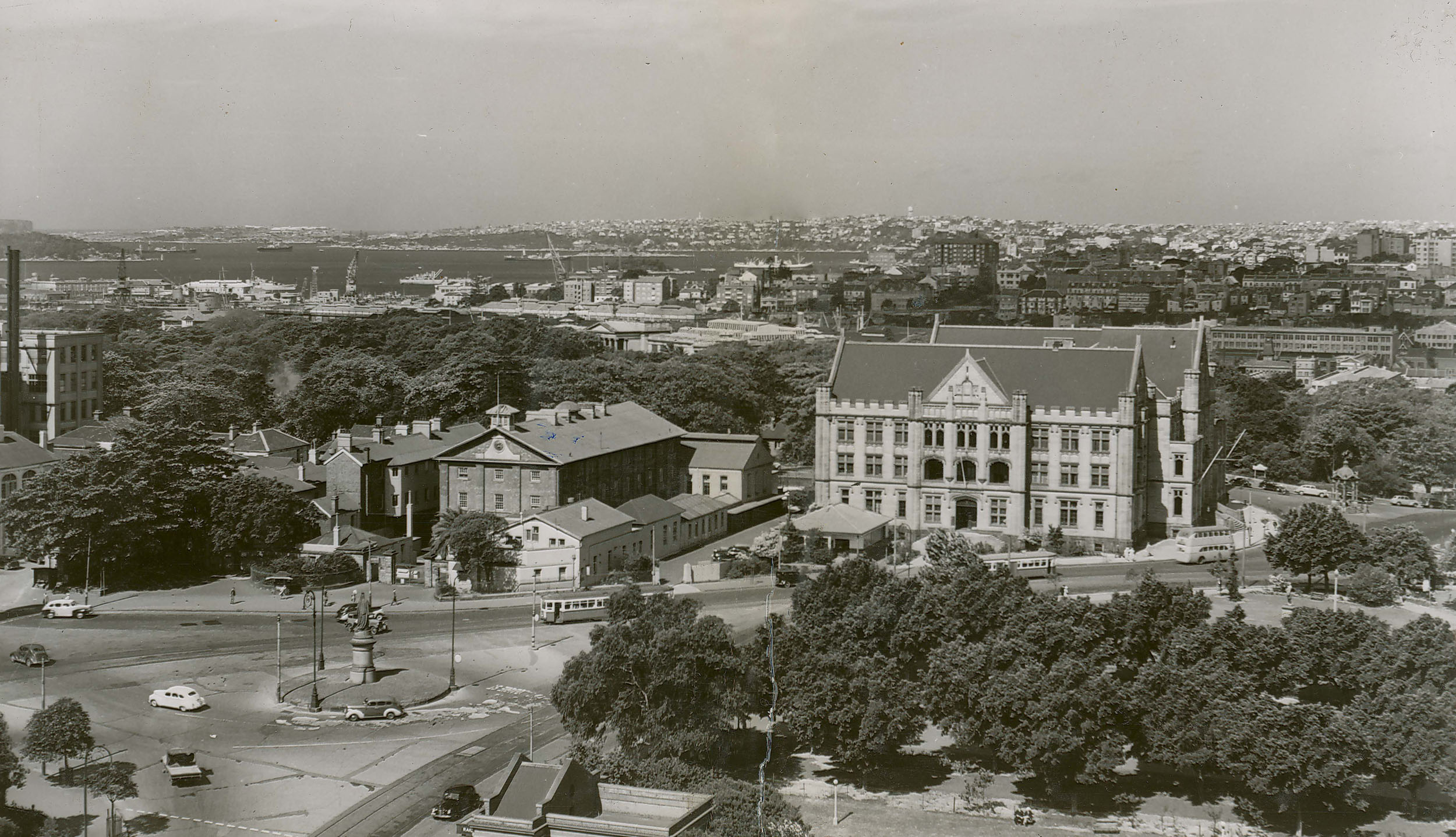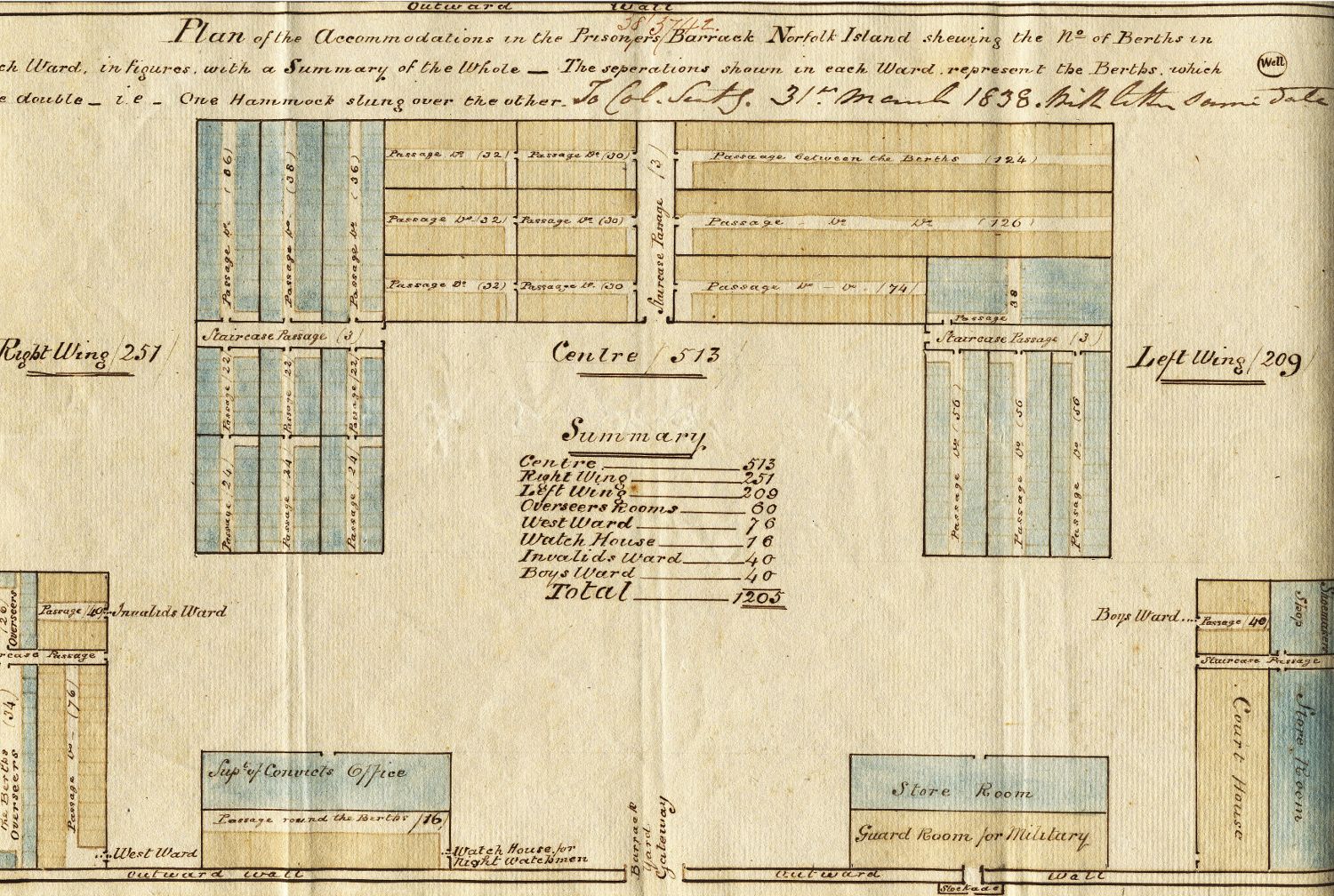This guide provides an entry into a unique collection of records, created by both the British Government and the Colonial administration, covering the period 1788-1842 (plus the 'convict exiles' from the later 1840s and 1850s) that documents the 'convict careers' of these men and women.
Between 1788 and 1842 about 80,000 convicts were transported to New South Wales. Of these, approximately 85% were men and 15% were women. Almost two thirds of convicts were English (along with a small number of Scottish and Welsh), with the Irish making up the remaining one third. Convicts were usually given sentences of transportation for seven, 14 years or life. Some convicts in the 1830s received ten-year sentences. About one quarter of the convicts were sentenced to 'the term of their natural lives', and a proportion of these had reprieves from the death sentence.
On arrival, a convict was either retained by the Government or assigned to an individual. Assigned male convicts were generally employed as field labourers, or tradesmen; women became domestic servants. Government convicts were most often engaged on public works projects. The majority of women convicts were engaged in the manufacture of wool and linen at the Parramatta Female Factory. A smaller number were employed as hospital nurses and midwives, as servants to officers, and in caring for orphans. Please be aware that very few records of assignment have survived.
Convicts with a life sentence could receive a pardon but not a Certificate of Freedom. The two main types of pardons were:
- Conditional pardon - the convict was free as long as they remained in the colony. The vast majority of convicts granted pardons were granted a conditional pardon
- Absolute pardon - the convict's sentence was entirely remitted. That is, they were free both within and outside of the colony and could return to Britain.
Penal settlements were places of incarceration and punishment for convicts who committed serious offences after reaching New South Wales.
Convict discipline depended not only on punishment but also on incentives and rewards. Governor King introduced the ticket of leave system in 1801. It helped reduce costs by allowing those who could support themselves honestly to do so and was also a reward for good behaviour. A ticket of leave allowed convicts to work for themselves on condition that they remained in a specified area, reported regularly to local authorities and if at all possible, attend divine worship every Sunday.
A list of convict records in our Collection relating to Van Diemen's Land.
Families of convicts sometimes accompanied their convict relations or came out later. Marriages in the Colony were encouraged, the authorities believing family life served moral ends and brought stability to society. Various inducements such as tickets of leave, pardons and assistance with establishing households were offered.
The majority of women convicts were engaged in the manufacture of wool and linen at the Female Factory. A smaller number were employed as hospital nurses and midwives, as servants to officers, and in caring for orphans. This guide provides a brief historical overview of the Female Factory and a list of the main record series.
The Moreton Bay penal colony, on traditional Turrbal and Yuggera land, operated from 1824 to 1842 as a place of secondary punishment for convicts who committed serious offences. In 1842 it was declared open for free settlement. It became the city of Brisbane.
Colour digitised images of early convict indents are available for the first time through 'Sentenced beyond the seas' - a project to digitise and index Australia's early convict records.
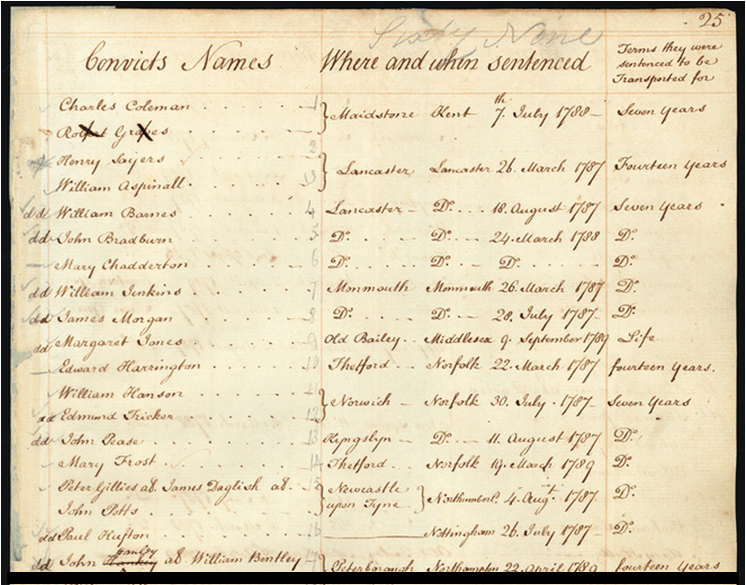
Muster and census records for Van Diemen's Land from 1811-1822. In 1856 Van Diemen's Land changed its name to Tasmania.


